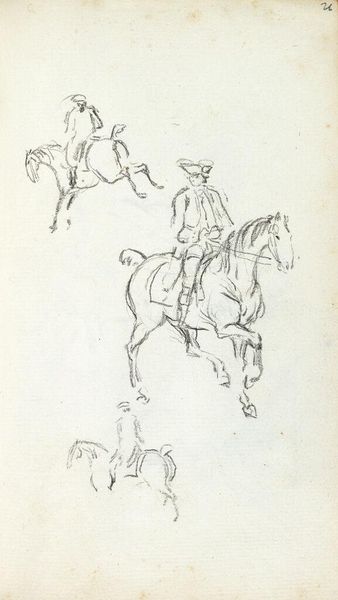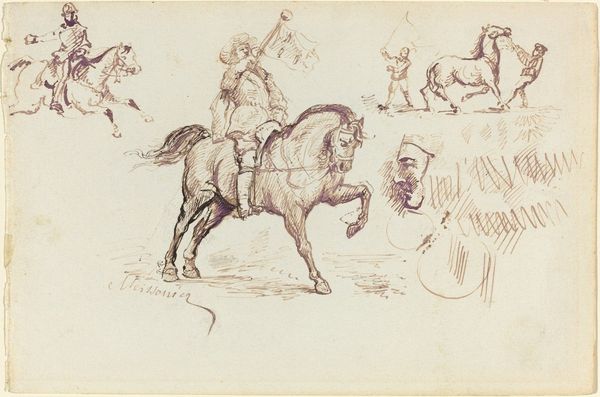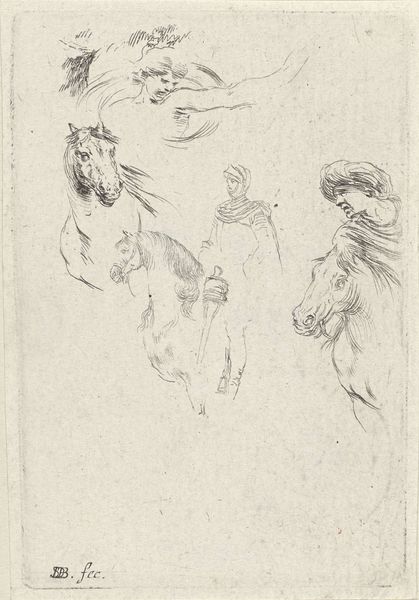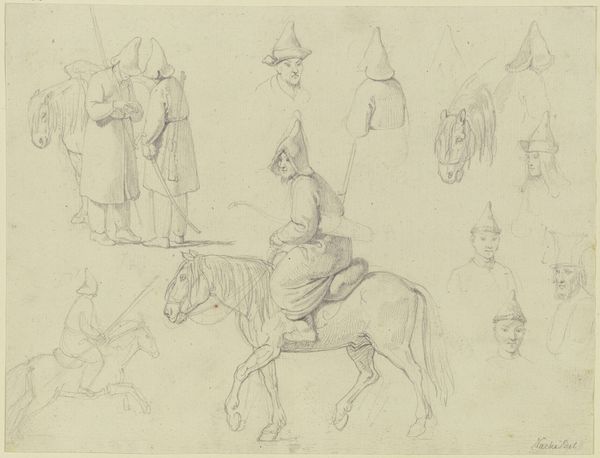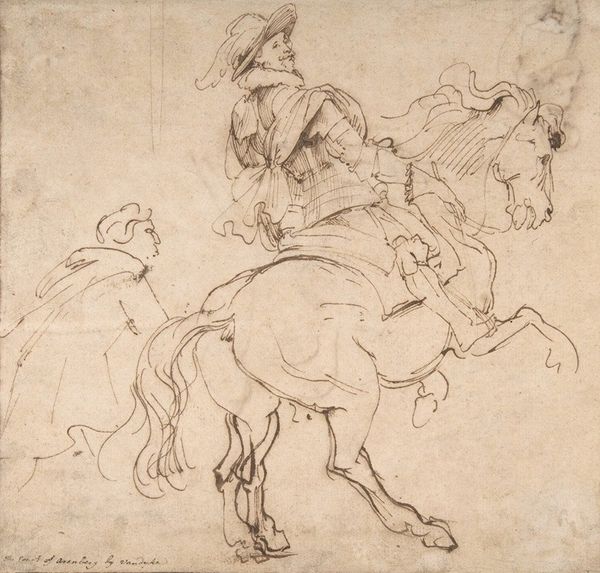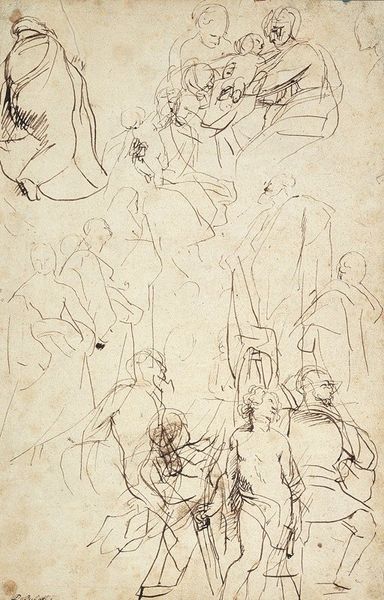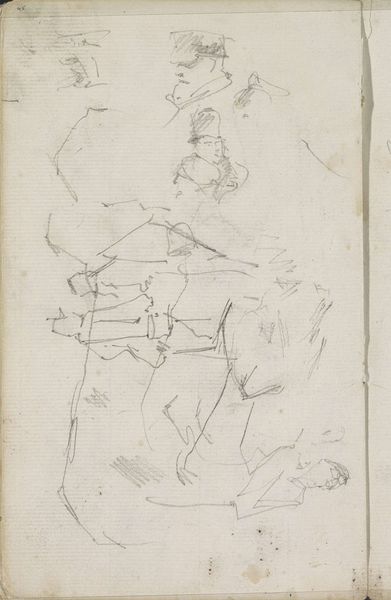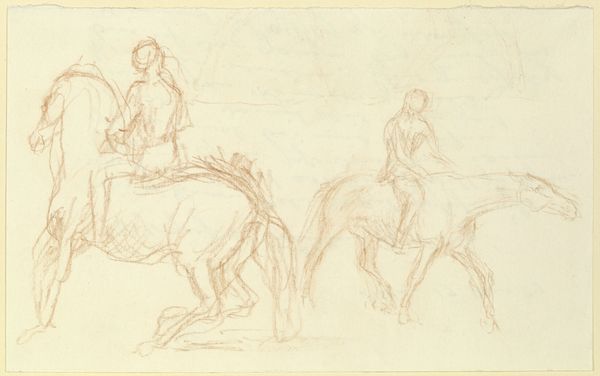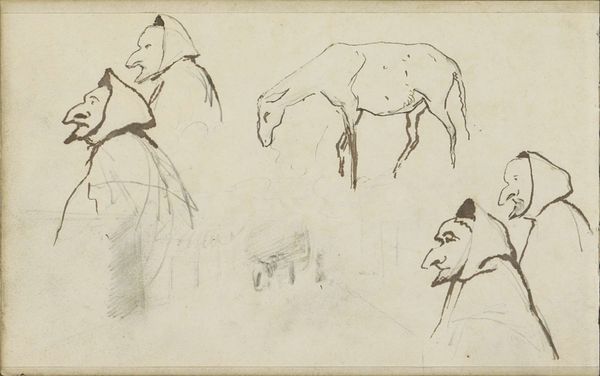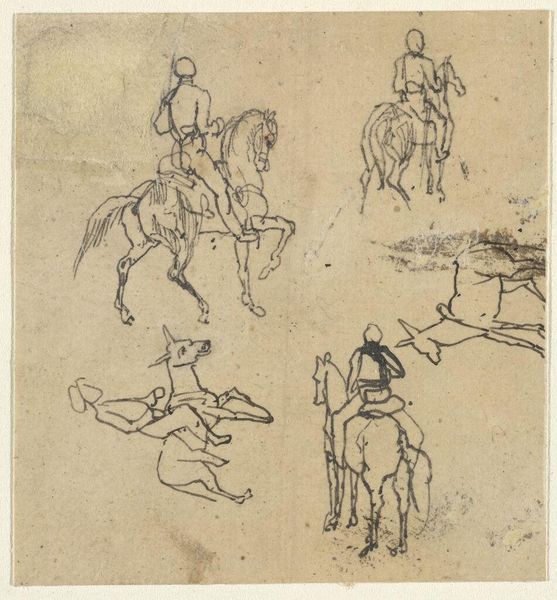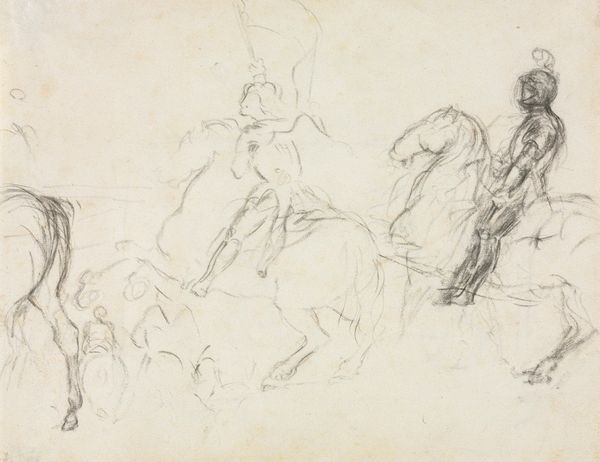
drawing, ink
#
drawing
#
landscape
#
figuration
#
ink
#
romanticism
Copyright: Public Domain: Artvee
Curator: John Linnell's drawing, "Studies of Horses, Men and Carriages," created in 1811, offers a glimpse into the everyday life of early 19th-century England. Editor: Immediately, the linearity strikes me. It has such a sense of lightness and transience. A casual feel, as if captured in a fleeting moment. Curator: The application of ink, a direct medium, allows for immediacy, yet consider the arrangement of the figures. Linnell positions each element – the horses, the men, the carriages – to create a dynamic interplay across the composition. It reminds one of Romanticism’s engagement with movement. Editor: Yes, but also with its practicality. This feels less like high Romanticism and more like the kind of sketching done in preparation for something else—note taking on labour, transport, and people's interactions with the means of production. Are these the working classes, I wonder? It certainly leans towards everyday toil rather than the sublime. Curator: Precisely! Linnell carefully considers how line weight contributes to spatial relationships, further complicating the plane. Notice the details of the figures on horseback and their arrangement with respect to those on foot: do they serve some function of control, social structure? How does this dynamic affect the meaning generated? Editor: Good question! It invites speculation on the power dynamics inherent in labor—the relationship between human and animal power, between those who manage resources and those who provide the means of transport or production. Curator: Exactly. These seemingly simple ink lines generate complexity. By observing and contemplating on them we recognize deeper systems. Editor: It is in that fine attention to line, in relation to labor and action, that these material conditions meet. Such deliberate, close attention does offer further understanding of an era's reliance on horsepower. Curator: Agreed. Reflecting upon the relationships of forms invites us to reassess this relationship between aesthetic form and social context. Editor: Indeed. Seeing beyond simple representation leads to considering wider aspects of life.
Comments
No comments
Be the first to comment and join the conversation on the ultimate creative platform.

